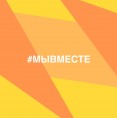- The exhibition “Every word is a shell” opened
- To selflessly defend the Motherland: to the 100th anniversary of the birth of General V. I. Demidov
- In the Museum opened the exhibition “Politics and music”
- In the Museum opened the exhibition “Donbass 14-22. The Right for Life”
- The museum held a lecture on the 150th anniversary of Matilda Kshesinskaya
- Museum opened the exhibition “The sketch of an epoch”
- The exhibition “Street Children. Waifs of the 1920s” opened at the museum
- The exhibition “The experiment that changed the world” opened on November 7
- An exhibition «Without the Right to Glory, for the Glory of the State» opened at the museum’s branch
- The award ceremony for the «Human Rights 2022» contest was held on December 9
- The exhibition «Always be ready» opened
- Museum hosted the conference on 100th anniversary of illegal intelligence
- The exhibition “The Word Belongs to the President of the Council of Ministers!”
- The exhibition “The Petrograd Process”
- The exhibition “Who are you, Alexandra Kollontai?” opened
- The exhibition “The Folk Talent Factory” opened
The exhibition “Every word is a shell” opened
The exhibition “Every word is a shell” opened at the museum. The exhibition is dedicated to the 20th century political ditty. Visitors will see rare editions of 1920-1940s ditties, work of arts and crafts, graphics and sculpture, object of peasant and collective farm labor and everyday life. The exhibition also features dolls of the early 20th century in Russian costumes, a platband from Grigory Rasputin`s house, and portraits of Lenin on fabric and propaganda shawls from 1920s. Visitors will hear unique audio recordings, as well as be able to buy a collection of socio-political ditties of the last century issues by the museum.
At the opening of the exhibition there was a performance by the folklore ensemble “Raduisya” whose members performed ditties of different years. Popular and literally ditties reflected the most important political events - wars, reforms and revolutions. As told at the opening of the exhibition first deputy director of the Museum of Political History of Russia for research Elena Lysenko, the museum has a rich collection of materials that are associated with this kind of folk art. Among the unique items are collections of ditties, which were published at the dawn of Soviet power, as well as a collection of ditties by the chorus of CPSU veterans.
This is not the first museum experience of creating an exhibition based on folklore material. In 2018, the museum held the exhibition “I will tell you an anecdote…” “Ditty is a predecessor of the political anecdote,” notes Elena Lysenko. – In the process of urbanization, along with the rural and peasant culture, the ditty also went into the past, and it was replaced by a political anecdote.”
The word “ditty” comes from the verb “to part”, that is to speak or chant quickly. As early as the end of the 19th century, a typical from of ditties appeared as a song on a simple melody, usually consisting of one quatrain. Ditties always refers to what is happening here and now to current events that concern the performer and listeners. For example, here is a ditty from the early 20th century about the State Duma: The Duma sits in Saint-Petersburg, Very seriously sits, About the humans’ needs It doesn't know a thing.
And here is a ditty about the leader of the Bolsheviks: I will buy a Lenin’s portrait, A golden frame, - He brought me into the light, A poor peasant girl.
The museum researchers did not create a folklore or ethnographic exhibition but an exhibition about the political history of Russia, emphasizes Elena Lysenko. Among the main motives of the texts of ditties in the 20th century – leaving for the front, the events of the Civil War, agrarian and cultural transformations, the introduction of new agricultural machinery, the flight into the space. Ditties created vivid portraits of state leaders, skillfully pointed out the difference between official ideology and reality, and played up propaganda slogans.
The popularity and accessibility of this folklore genre was exploited by various political forces. In the USSR, the main customer of the propaganda ditty was the state. Ideologically correct ditties were supposed to form a positive view of the policy of the authorities to strengthen patriotic spirits.
The study of ditties was important for analyzing the moods of the people, especially in the countryside. The Institute of Literature of the USSR Academy of Sciences, the Institute of Ethnography of the USSR Academy of Sciences, and the All-Union House of Folk Art were engaged in this work. In the 1930s, the large number of anti-kolhoz, “kulak” and simply hooligan ditties. Collected materials were withdrawn, collections of ditties were censored and banned. Some of the ditties on display were in state and private archives for decades.
The exhibition runs until March 1, 2023.
At the opening of the exhibition there was a performance by the folklore ensemble “Raduisya” whose members performed ditties of different years. Popular and literally ditties reflected the most important political events - wars, reforms and revolutions. As told at the opening of the exhibition first deputy director of the Museum of Political History of Russia for research Elena Lysenko, the museum has a rich collection of materials that are associated with this kind of folk art. Among the unique items are collections of ditties, which were published at the dawn of Soviet power, as well as a collection of ditties by the chorus of CPSU veterans.
This is not the first museum experience of creating an exhibition based on folklore material. In 2018, the museum held the exhibition “I will tell you an anecdote…” “Ditty is a predecessor of the political anecdote,” notes Elena Lysenko. – In the process of urbanization, along with the rural and peasant culture, the ditty also went into the past, and it was replaced by a political anecdote.”
The word “ditty” comes from the verb “to part”, that is to speak or chant quickly. As early as the end of the 19th century, a typical from of ditties appeared as a song on a simple melody, usually consisting of one quatrain. Ditties always refers to what is happening here and now to current events that concern the performer and listeners. For example, here is a ditty from the early 20th century about the State Duma: The Duma sits in Saint-Petersburg, Very seriously sits, About the humans’ needs It doesn't know a thing.
And here is a ditty about the leader of the Bolsheviks: I will buy a Lenin’s portrait, A golden frame, - He brought me into the light, A poor peasant girl.
The museum researchers did not create a folklore or ethnographic exhibition but an exhibition about the political history of Russia, emphasizes Elena Lysenko. Among the main motives of the texts of ditties in the 20th century – leaving for the front, the events of the Civil War, agrarian and cultural transformations, the introduction of new agricultural machinery, the flight into the space. Ditties created vivid portraits of state leaders, skillfully pointed out the difference between official ideology and reality, and played up propaganda slogans.
The popularity and accessibility of this folklore genre was exploited by various political forces. In the USSR, the main customer of the propaganda ditty was the state. Ideologically correct ditties were supposed to form a positive view of the policy of the authorities to strengthen patriotic spirits.
The study of ditties was important for analyzing the moods of the people, especially in the countryside. The Institute of Literature of the USSR Academy of Sciences, the Institute of Ethnography of the USSR Academy of Sciences, and the All-Union House of Folk Art were engaged in this work. In the 1930s, the large number of anti-kolhoz, “kulak” and simply hooligan ditties. Collected materials were withdrawn, collections of ditties were censored and banned. Some of the ditties on display were in state and private archives for decades.
The exhibition runs until March 1, 2023.
















